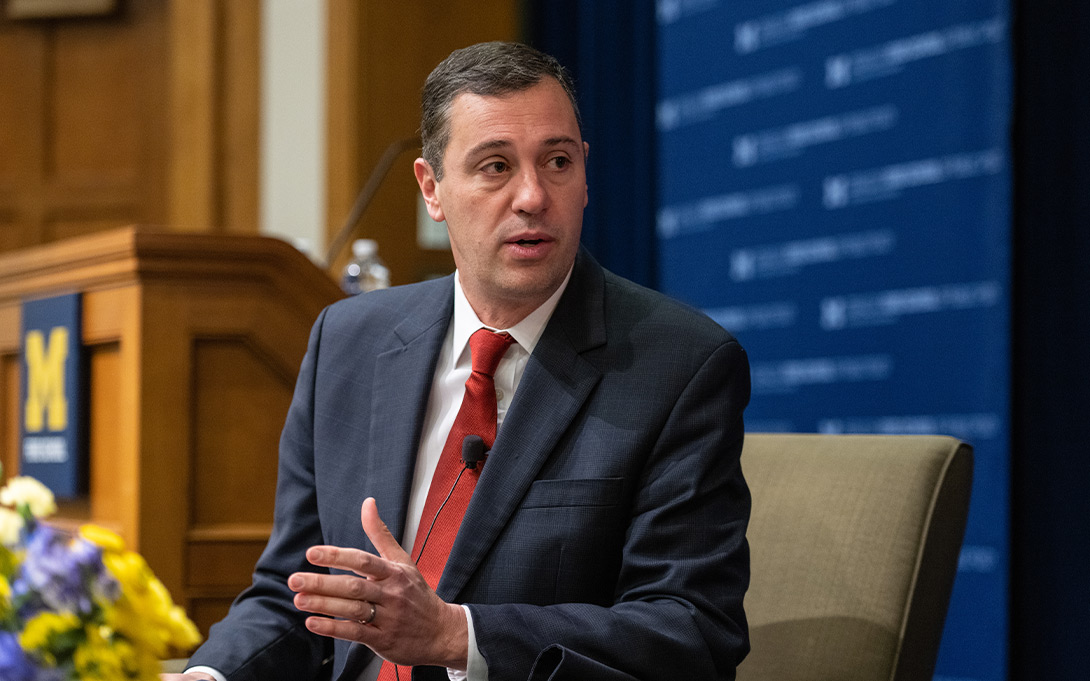
Pakistan is facing a multidimensional crisis. Its economy is teetering on collapse due to a possible political crisis, the rupee plummeting and inflation at decades-high levels, devastating floods, and a significant shortage of energy.
Offering his insight on the situation is John Ciorciari, professor and associate dean for research and policy engagement at the Ford School. He is also director of the Ford School's International Policy Center and Weiser Diplomacy Center.
How bad is the economic crisis in Pakistan, especially after the floods?
Pakistan faces a severe economic crisis and clearly requires external support. Foreign exchange reserves are at dangerously low levels—enough to pay for only a few weeks' worth of imports. Inflation is at its highest levels in decades, growth is sagging and the central bank has raised interest rates sharply to address a weak currency. Food and fuel prices are causing real pain to ordinary people, and the country's economic challenges are only exacerbated by the devastation wrought by the floods.
The economy was struggling even before the floods. What are some of the other causes?
Pakistan's economic crisis has numerous causes. Weak governance and political instability have been significant factors, weakening investor confidence in the country and contributing to corruption and pork-barrel politics that undermine the country's fiscal position. Pakistan is also highly import-dependent, particularly with regard to energy, which renders it acutely vulnerable to hikes in global oil and gas prices. The pandemic did not help, and Pakistan's tense relations with India continue to deprive it of a potentially transformative trading and investment partner.
The international community has pledged $9 billion to help them. Some of the biggest donors are Saudi Arabia and China. Do you think these governments will expect support in any way from Pakistan in return?
Donors such as China and Saudi Arabia may not include many explicit conditions to their aid, but implicit strings are always attached. China will look to Pakistan for favorable development opportunities, such as the energy corridor running from the Arabian Sea to China's western provinces and the strategically vital port of Gwadar. China will also seek Pakistan's support on geopolitical issues ranging from the Taiwan Strait to Afghanistan and Ukraine.
Saudi Arabia sees Pakistan not only as a key oil purchaser and source of migrant labor but also as a key Sunni-majority ally vis-à-vis Iran. Riyadh will expect Islamabad to support Saudi initiatives in the Persian Gulf and Saudi leadership stemming from its role as guardian of the holy sites of Mecca and Medina.
Is $9 billion enough to help them rebuild and make it out of the crisis?
Pakistan will need an infusion of more than $9 billion to climb out of the crisis. However, much should come from private sources. The value of IMF funds is to provide a stopgap, rebuilding confidence in a way that encourages private flows to resume.
Will Pakistan be able to protect itself from inevitable future climate disasters?
Pakistan is highly vulnerable to climate-linked disasters and cannot alone build a fortress against climate change. Stronger domestic preparedness and resilience are clearly needed, but ultimately Pakistan's fortunes will hinge primarily on global progress to address the drivers of climate change.
Will all the money pledged to Pakistan be used towards flood recovery, or do you expect some might help their federal reserves that were at dangerous levels before the flood?
First and foremost, IMF funds will help Pakistan avoid default on its international obligations, which could have seismic consequences for its economy and its people. Replenishing foreign reserves is crucial in this regard. Aid programs will also help address the flood recovery, but this will be much more manageable if Pakistan's reserves rise to levels that instill confidence in its ability to pay its debts.